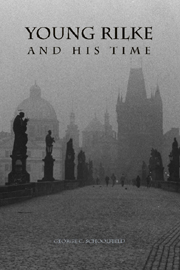Preface
Published online by Cambridge University Press: 05 February 2013
Summary
The idea forYoung Rilke and His Time came to the author more than a quarter of a century ago, as he was translating Henning Fenger's Kierkegaard-Myter og Kierkegaard-Kilder (1976, Kierkegaard, The Myths and Their Origins, 1980). There Fenger wrote that he was most fascinated by great men when they were young: “They are most exciting in their youthful years, the formative period in which they absorb impressions and impulses, and when their taste and view of life are being formed.” The author did not turn directly to the daunting and diffuse project, although he made feints toward it in articles and contributions to Festschriften (a few of which are resuscitated, greatly emended, in these pages). Instead, he wandered afield to Fennica and to the Décadence. When James Hardin, the founder of Camden House, proposed a book on Rilke, a study of René Maria Caesar Rilke, shortly to become Rainer Maria, seemed an appropriate reply.
Young Rilke and His Time does not pretend to be systematic or exhaustive. It consists of eighteen chapters (1–5, 8–20) on Rilke's life and creative work from circa 1892 to 1900, together with a single-poem pendant from 1904; two chapters (6 and 7) are given over to his reviewing activity, which ended the same year. The loose form was suggested by Olle Holmberg's Sex kapitel om Stagnelius (Six Chapters about Stagnelius, 1941), the Swedish romantic poet (1793–1823).
- Type
- Chapter
- Information
- Young Rilke and his Time , pp. xi - xivPublisher: Boydell & BrewerPrint publication year: 2008



